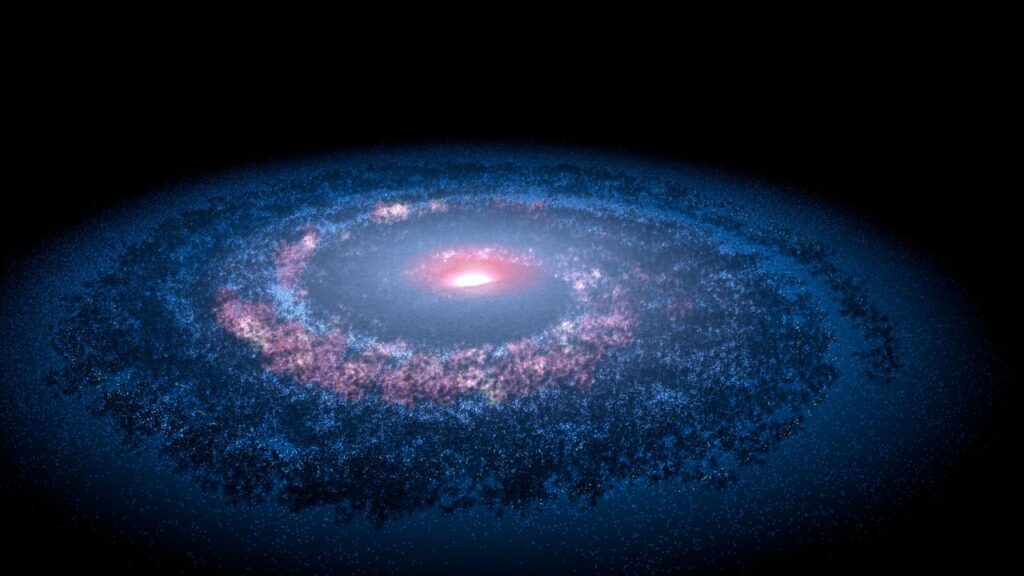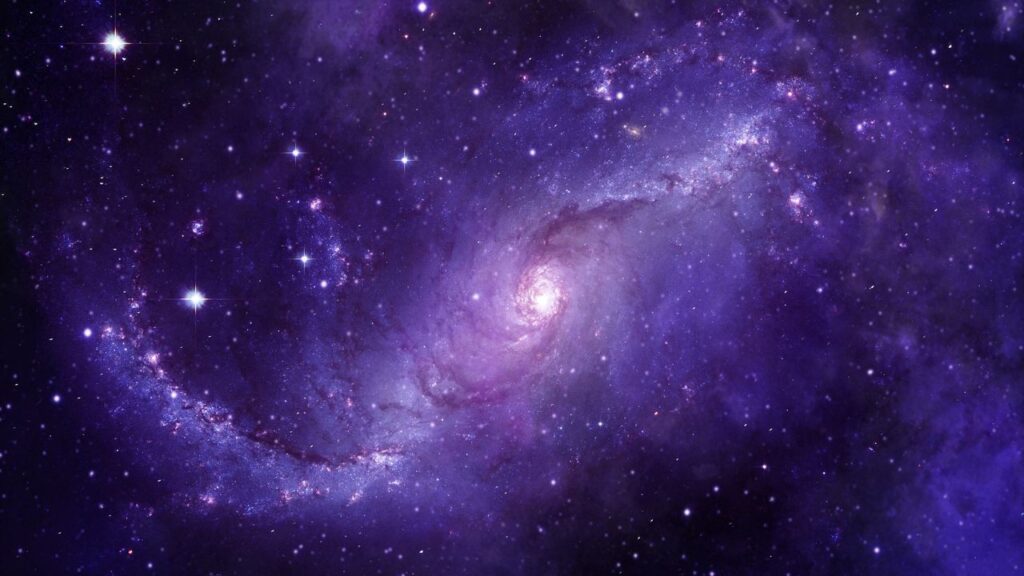In this article, a question about black holes has been shared and various unanswered questions and answers given.
Black holes exist: a window to the invisible
Black holes are one of the most enigmatic and fascinating objects in the universe. They’re areas of spacetime in which gravitational forces are so intense that nothing, no longer even light, can get away their grasp.

Whilst they’re a theoretical prediction of Albert Einstein’s principle of general relativity, good-sized evidence helps their lifestyles.
In this exploration, we can delve into the evidence for black holes, the concept of gravitational waves, and why we don’t look at black hollow collisions as regularly as different celestial activities.
Evidence for Black Holes
The lifestyles of black holes are supported via numerous strains of proof:
1. Stellar evolution: Large stars, generally the ones greater than 20 times the mass of our solar, go through a dramatic crumble at the end of their lifecycle.
This disintegration leads to the formation of a black hollow, which is the remnant of the famous person’s center.
The fact that we examine stars behaving in this way, forming neutron stars and black holes, strongly helps their life.
2. X-ray binaries: X-ray binary structures include a compact item (either a neutron celebrity or a black hollow) and a partner famous person.
As material from the partner famous person falls onto the compact item, it heats up and emits x-rays.
With the aid of analyzing the properties of those systems, astronomers have identified numerous black hole candidates primarily based on their characteristics, along with their mass and x-ray emissions.
3. Gravitational lensing: The gravitational subject of a black hole can bend mildly passing close by, inflicting a phenomenon called gravitational lensing.
This impact has been located in diverse astronomical contexts, providing oblique proof for the presence of black holes.
4. Orbital dynamics: The movement of stars within galaxies can be used to infer the presence of massive, unseen gadgets at their facilities.
Many galaxies, consisting of our milky manner, have supermassive black holes at their cores, that have been studied significantly through the orbits of close by stars.
5. Gravitational waves: The maximum groundbreaking evidence for black holes comes from the detection of gravitational waves, ripples in spacetime caused by the acceleration of huge gadgets.
Gravitational wave detectors like Ligo and Virgo have located the collisions of black holes, confirming their life.
Gravitational waves: The messenger of black hole collisions
Gravitational waves are a fundamental prediction of Einstein’s principle of well-known relativity.
They may be analogous to ripples in a pond whilst a stone is thrown into it. Big accelerating items, like black holes or neutron stars orbiting every different, create those ripples in spacetime, propagating outward at the velocity of light.

After they attain Earth, they’re detected by way of sophisticated units.
The laser interferometer gravitational-wave observatory (Ligo) and Virgo collaboration have been instrumental in the direct detection of gravitational waves.
These detectors consist of kilometers-long arms which are exactly monitored with laser beams.
Whilst a gravitational wave passes via the detector, it causes a minuscule alternate in the distance between the hands, which may be detected with notable precision.
The detection of Black Hole Collisions
The reason the first detection of gravitational waves was in 2015, Ligo and Virgo have found numerous mergers of binary black hollow structures.
These detections provide robust empirical evidence for the existence of black holes and offer insights into their properties, which include their loads, spins, and distances from Earth.
One of the major discoveries was the detection of the binary black hole merger gw150914 in 2015. It involved black holes, approximately 36 and 29 times the mass of the sun, which merged into an unmarried black hollow of approximately 62 sun loads.
The power launched during this collision became titanic, with the very last fraction of a second emitting extra energy than all of the stars inside the observable universe combined. This energy was emitted inside the shape of gravitational waves, which Ligo and Virgo correctly detected.
Next detections have found out a numerous populace of black hollow mergers, inclusive of those concerning smaller black holes, larger black holes, and exclusive mass ratios.
Those observations have deepened our understanding of black hole formation, evolution, and mergers.
Why don’t we see black hole collisions more often?
While black hole collisions are certainly an awe-inspiring cosmic event, they may be relatively rare, and several factors contribute to their infrequency in our observable universe:
1. Distance: Gravitational waves weaken with distance, following an inverse-square regulation.
This means the farther an occasion is from us, the weaker the gravitational waves it produces when it reaches us.
Most of the black hollow mergers determined by means of ligo and Virgo have been at distances of masses of tens of millions to billions of mild-years away, making them tremendously faint by the time they attain earth.
2. Mass distribution: The wide variety of binary black hollow systems within the universe depends on the initial mass distribution of stars and their evolution.
It seems that the formation of huge binary black hole structures is less commonplace than other stellar evolutionary paths, which include the formation of neutron stars or solitary black holes.
3. Detection sensitivity: Gravitational wave detectors like Ligo and Virgo are highly sensitive, but they may be no longer able to detect all black hole mergers inside the universe. The events they could hit upon are confined via their sensitivity and the energy of the gravitational waves emitted.
4. Observational time: The gravitational wave detectors had been operational for a particularly brief time as compared to the cosmic timescales worried in black hollow mergers. As the era improves and observational time accumulates, we can count on more detections.
What are the advantages of black holes?
Black holes are captivating astronomical items with numerous ability advantages and implications, even though these are frequently greater speculative and theoretical than sensible.
Here are a few approaches wherein black holes may want to potentially advantage of our information about the universe and destiny technology:
1. Trying out trendy relativity: Black holes provide severe environments in which the consequences of preferred relativity may be examined and studied.
Observations of black holes can help verify and refine Einstein’s theory of gravity, advancing our understanding of the fundamental laws of the universe.
2. Gravitational wave astronomy: The detection of gravitational waves from black hole mergers has spread out a brand new subject of astronomy.
Reading those waves lets us take a look at activities within the universe that have been previously hidden from view, supplying insights into the conduct of rely on and gravity under severe conditions.
3. Information stellar evolution: Black holes are the quit merchandise of large big name evolution.
Studying black holes can help us better apprehend the life cycles of stars, inclusive of how they shape, evolve, and eventually die.
4. Dark be counted studies: Black holes can also have a function to play in the examination of dark matter.
Some theories recommend the existence of primordial black holes as a possible candidate for darkish matter. Observations and experiments ought to help affirm or refute this hypothesis.
5. Energy technology: Even though noticeably speculative and presently beyond our technological abilities, there have been theoretical proposals to harness the electricity of rotating black holes, called Kerr black holes, via an idea referred to as the Penrose method. This will involve extracting strength from the black hole’s rotation, much like a rotating flywheel.
6. Wormholes and time tour: Black holes and their theoretical counterparts, wormholes, are regularly explored in the context of technology fiction and theoretical physics as capacity shortcuts through spacetime.
If strong and traversable wormholes were to exist, they might have profound implications for interstellar journeys or even the possibility of time tours, although those ideas stay speculative.
7. Cosmic laboratories: Black holes create specific environments for checking out the laws of physics beneath extreme conditions.
As an example, they are able to offer insights into the conduct of count numbers at fantastically high densities, temperatures, and gravitational forces.
Expertise in these situations can contribute to our knowledge of particle physics and essential forces.
It is important to notice that lots of those capability advantages are theoretical or primarily based on speculative thoughts.
Black holes additionally pose widespread challenges and risks, inclusive of the unfavorable tidal forces near a black hollow’s occasion horizon and the capacity for falling right into a black hollow, which could be catastrophic for any spacecraft or generation.
Moreover, even though black holes are charming and treasured for clinical studies, they may be now not practical strength sources or tools for space journeys in the foreseeable future due to their extreme nature and the technological challenges concerned with interacting with them.
In Summary
Black holes offer opportunities for scientific discovery, testing fundamental physics theories, and advancing our knowledge of the universe.
However, their sensible programs and blessings are currently constrained by way of the challenges and uncertainties surrounding those mysterious cosmic items.
Black holes do exist, and we have compelling proof for his or her existence. Gravitational wave detectors have furnished direct confirmation of their presence through the remark of black hollow mergers.
However, these events are uncommon due to factors like distance, the distribution of black hollow masses, detection sensitivity, and the restricted observational time.
As our generation advances and we continue to explore the universe, we will expect to discover more of these splendid activities, dropping similarly mild at the mysterious nature of black holes and the broader cosmos.
Frequently Asked Questions
Who has long past internal a black hollow?
Fortunately, this has never befallen all of us black holes are too far away to tug in any matter from our solar system.
But scientists have discovered black holes ripping stars aside, a system that releases a fantastic quantity of power.
How did black holes exist?
Stellar black holes form while the middle of a totally large star collapses in upon itself. This fall apart additionally causes a supernova or an exploding star, that blasts a part of the famous person into space.
Scientists assume supermassive black holes fashioned at the same time as the galaxy they’re in.
Who invented the black hole?
The first black hole determined, Albert Einstein first expected the existence of black holes in 1916, along with his widespread idea of relativity.
The time period “black hollow” was coined a few years later in 1967 by way of American astronomer John Wheeler.
Will a black hollow hit Earth?
The possibility that a black hollow should honestly impact Earth may also seem immediately out of technological know-how fiction, however, the fact is that microscopic primordial black holes may want to certainly hit Earth.
If one did, it wouldn’t just impact like an asteroid, it would bypass instantly through the whole earth and exit the alternative side.
Read also:










